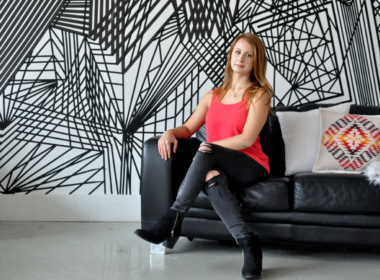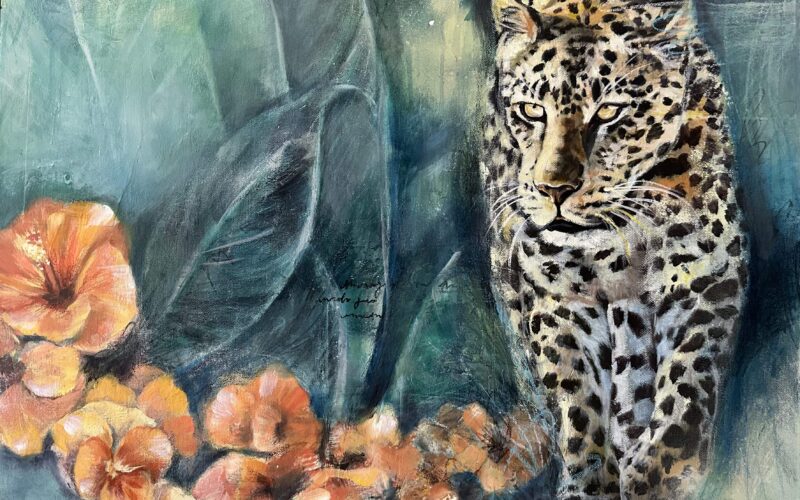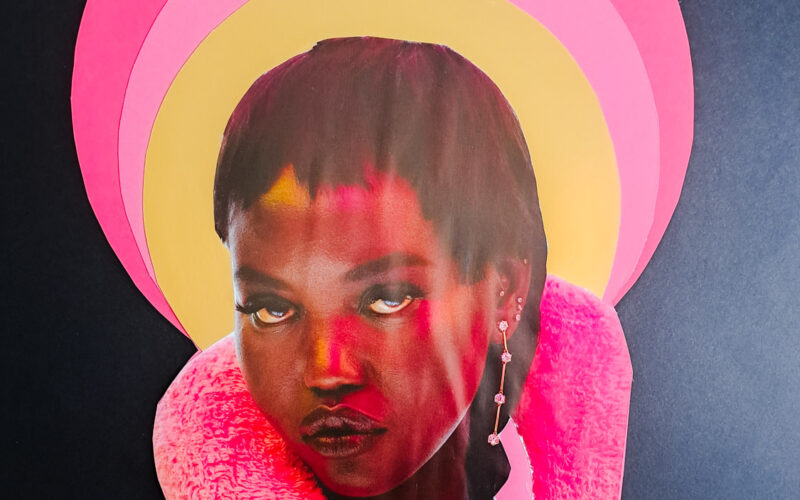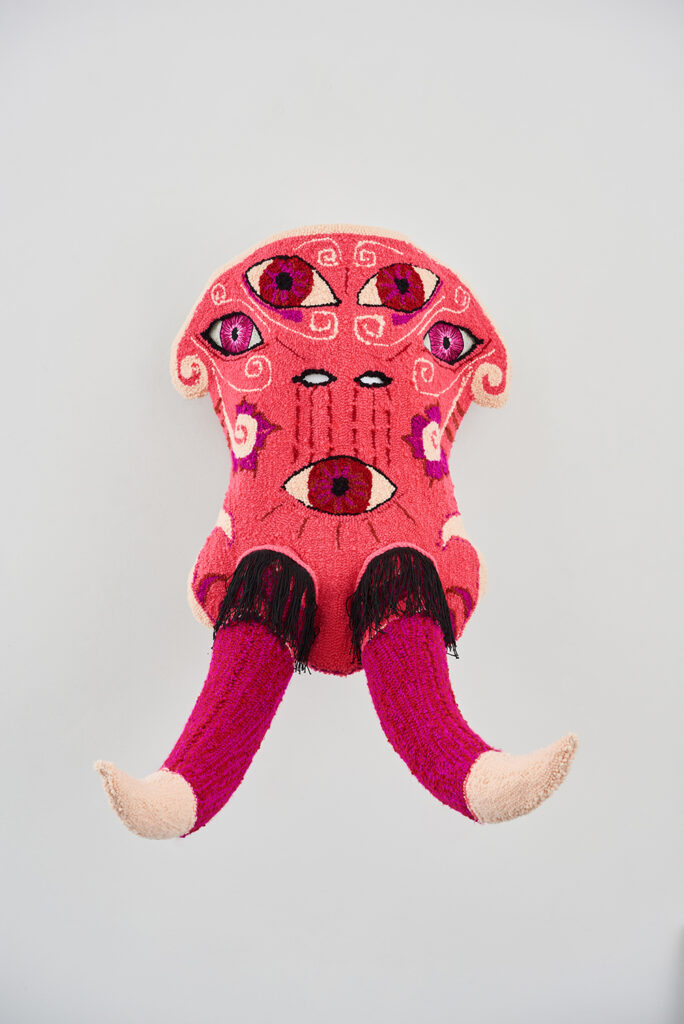
How Rajul Shah’s Art Combines Kintsugi with the Healing Energy of Chakras


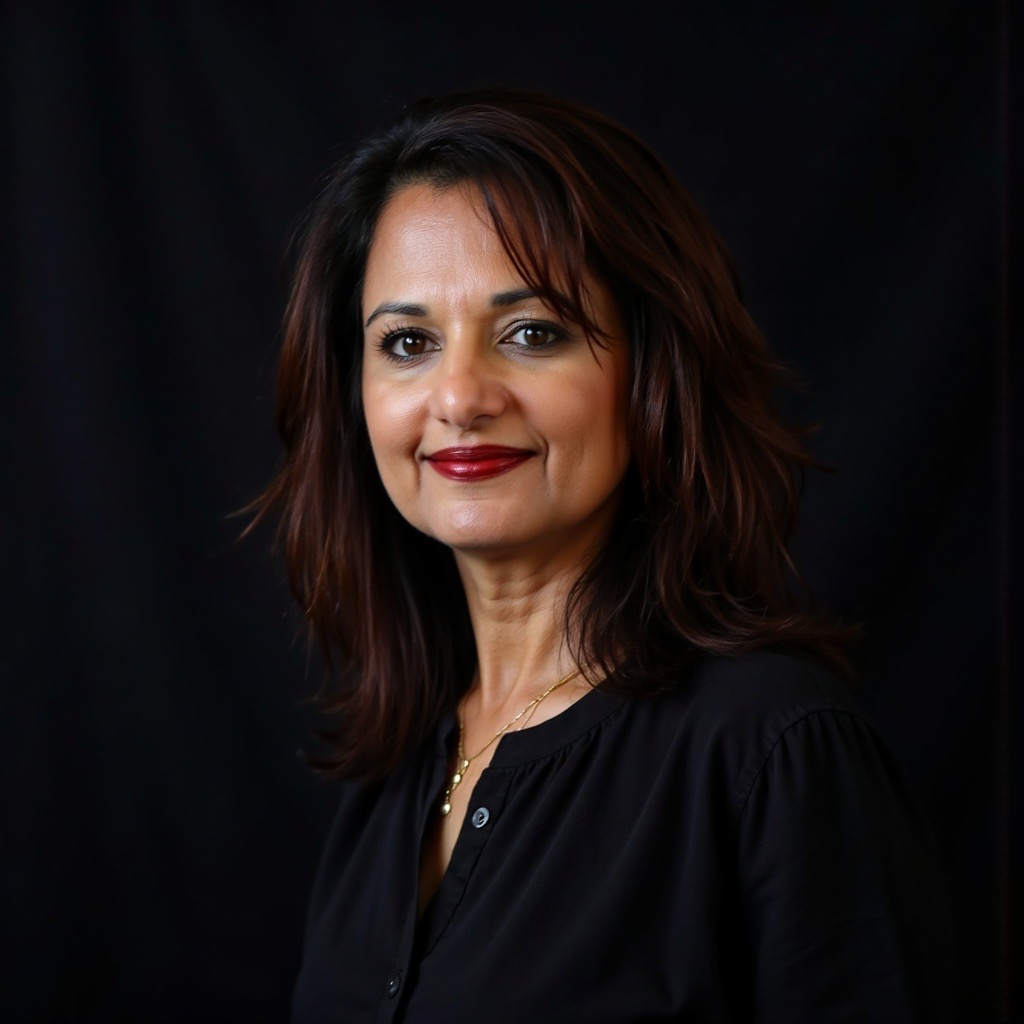
Rajul Shah is an international artist whose work beautifully blends the ancient Japanese art of Kintsugi with the spiritual energy of chakras. In this interview, she opens up about how her art reflects her journey of healing and transformation. Rajul shares how she uses color and texture to represent the different energy centers of the body, using the concept of Kintsugi to symbolize the beauty found in life’s imperfections. She talks about how her struggles with anxiety and loss have shaped her creative process and how art has become a tool for her renewal. Through her story, we learn how art can help us reflect, heal, and grow, offering a path to emotional and spiritual peace.
Rajul Shah is a featured artist in our book “Lines And Curves.” You can explore her journey and the stories of other artists by purchasing the book here: https://shop.artstoheartsproject.com/products/the-creative-process-book


Rajul Shah is an international artist trained in Japan. Her work fuses the philosophies behind the Japanese art of Kintsugi with the spiritual teachings of the Chakras. By using the aura color of each chakra, she paints meditative abstract expressions of color. She views Kintsugi as a metaphor for the human journey, noting that, like pottery, we, too, bear the scars of life’s trials and tribulations. These scars tell our unique stories and signify our strength and resilience.
She mentions that each chakra is represented by a distinct color, symbolizing a different aspect of our physical, emotional, and spiritual well-being. Her paintings explore the harmonious relationship between these energy centers and their corresponding colors, inviting viewers to reflect on their own journey of acceptance, healing, and growth.
Rajul believes that what needs repair does not have to define us. She stresses that we can heal, regenerate, and evolve into improved versions of ourselves with renewed strength and purpose. Her work has been displayed at prestigious venues such as the National Art Gallery, the Ueno No Mori Museum, and the Tokyo Metropolitan Museum of Art in Tokyo, as well as the Tokyo Tower International Art Fair, ION Art Gallery, and the German Centre in Singapore.
1. Rajul, Your art beautifully combines the ancient practice of kintsugi with the energy of chakras. What inspired this fusion, and how do you feel it reflects the human journey of healing?
Balancing my chakras (the flow of energy across all 7 chakras) is the “WHAT” I have to do to maintain emotional and physical well-being. I do this through Yoga and Meditation. Imperfect life experiences affect the flow of energy, blocking the energy from moving freely. How we respond to adversity is important. Having lived in Japan for 8 years, I learned about the Japanese Art of Kintsugi. It is the philosophy behind this Art that inspires me to embrace imperfect experiences, accept what is broken, and bond the pieces back together to become stronger.
Doing this unblocks and allows my energy to flow freely again. As an artist, I desire to visually communicate this process. It took me time – experimenting with different subjects, like the human body and nature. Then, Rothko’s color-field paintings started coming across my social media feeds, and it all clicked for me. His colorfields inspired me to build the aura color of each chakra layer by layer and then overlay those layers with lines representing the philosophy of Kintsugi. I paint this in a manner that allows the viewer to meditate, introspect, and feel renewed.
What needs repair does not need to define us. We can heal, regenerate, and evolve into improved versions of ourselves, with renewed strength and purpose.
Rajul Shah

2. Can you describe how the use of color in your work aligns with the emotional and spiritual themes of the chakras?
There are 7 major chakras along our spine from the base of our spine to the crown of our head. Chakras are spinning wheels or vortices of energy that interact with the body’s physical and subtle energies; each one aligns with organs, psychological states, and spiritual attributes in its area.
Each chakra has its own aura of color(s). Using color theory, I invite the viewer to meditate on the chakra’s colorfield and think about his/her own story of life with its imperfections and challenges and how they impact specific energy centers in his/her body. Kintsugi’s lines remind the viewer that “scars” can be beautiful, inspiring a state of introspection leading to renewal. Red is the aura of our first chakra, the “Root” chakra – this represents our family and culture of origin. The second chakra’s aura is orange and 2 inches below the navel. It is considered our “essence” – what completes us as an individual – our hobbies, likes, and dislikes, where we find inspiration. The third chakra’s aura is yellow, and it is located 2 inches above the navel. It is where we hold our personal power – otherwise known as our “warrior” chakra.
The fourth chakra is our Heart chakra. Its aura color is green and represents our connections to others. The fifth chakra, located in our throat, represents our ability to express ourselves – whether with our voice or other forms of expression, such as writing, dance, music, etc. The sixth chakra is our “third-eye,” in the middle of our forehead. With an indigo aura, It is the energy center of our “Intuition” – insights we have gained. Finally, the seventh chakra, located in the crown of our head, has aura colors of purple, white ,and gold. When the first six chakras are unblocked, we realize an enlightened peace.
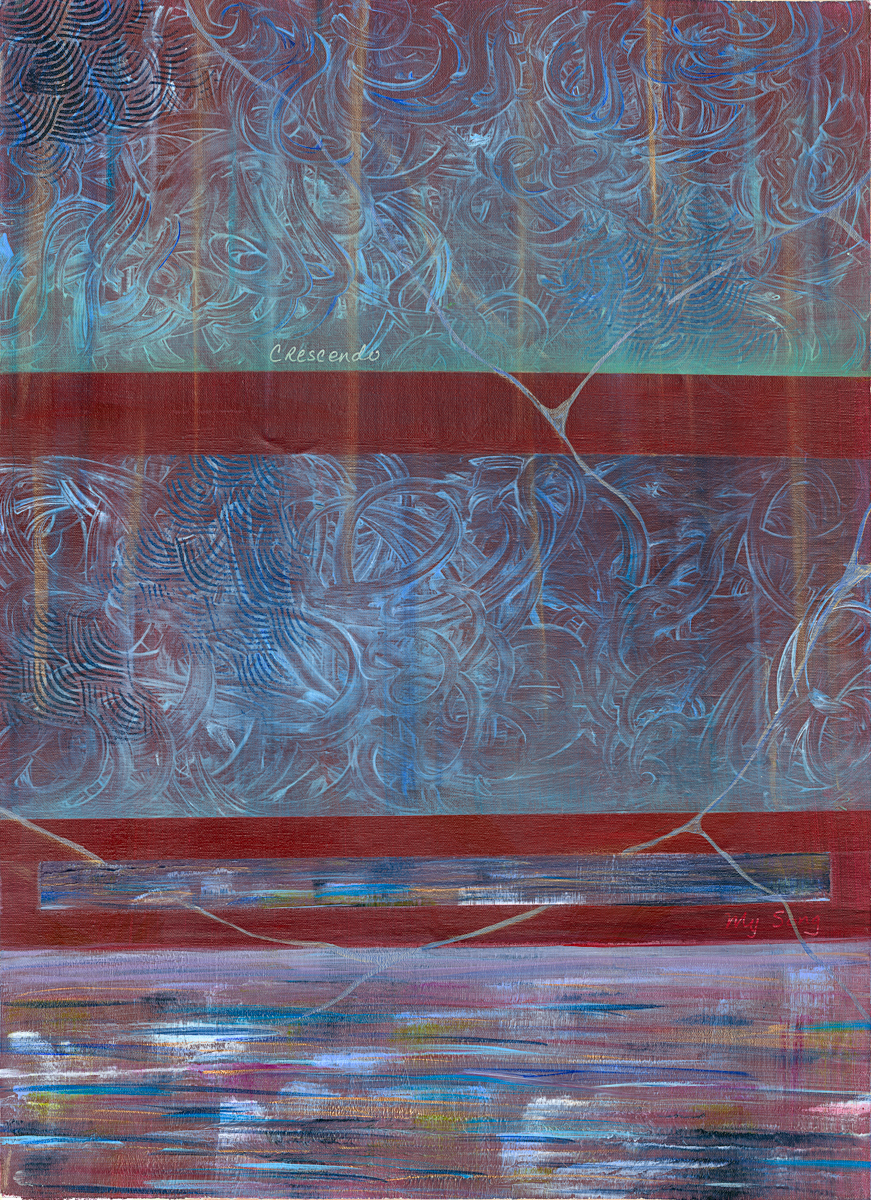
3. Your art celebrates imperfection and transformation. How do you personally connect with the concept of renewal in your life?
Everyone has a story that includes adversity, disappointment, and challenge. I am no different. My life’s journey includes depression and, in recent times, severe anxiety. Art gives me a space where I can turn inward. Using my hands to paint the first few, if not all, layers of my Art provides a soothing tactile experience. Looking back at what I’ve created over the last few years, I notice that I have been drawn to paint color fields specific to my heart chakra. Living in Singapore during COVID, with its quarantines and lockdowns, led to separation from my family and older children, stressing connections with my family, my marriage, and my friendships. Losing loved ones from COVID means many of us are still dealing with the residual trauma of a COVID world. Like everyone else, my heart was hurting (my 4th chakra). Looking back through my Art Journals and the paintings I have created since COVID, many of them are in green color fields (the aura color of the 4th chakra) – I was/am painting to heal my heart chakra.

4. You mention working with various materials, including gold leaf and traditional papers. How does your choice of materials influence the storytelling aspect of your art?
I am a spontaneous painter. I may have a vision of what I want the painting to look like, but I let each layer tell me what the next one should be. I don’t have a formula – I go with what inspires me in the moment. Often times, I will work in a meditative and circular motion to lay down texture with my hands/fingertips. Texture can be molding paste, medium, and/or paint. I like to feel the substrate I am working with, whether it’s wood, canvas, washi paper, or otherwise – I find the sensations soothing and think I am infusing positive energy into my Artwork. I love the delicate beauty of gold and silver leaves and find the symbolism of metallic strength to be inspiring. While I may start with layers of texture to illustrate the imperfectness of life, the final layers of glaze, contrast of color, collage, and kintsugi lines represent the healing journey and eventual evolution from adversity.
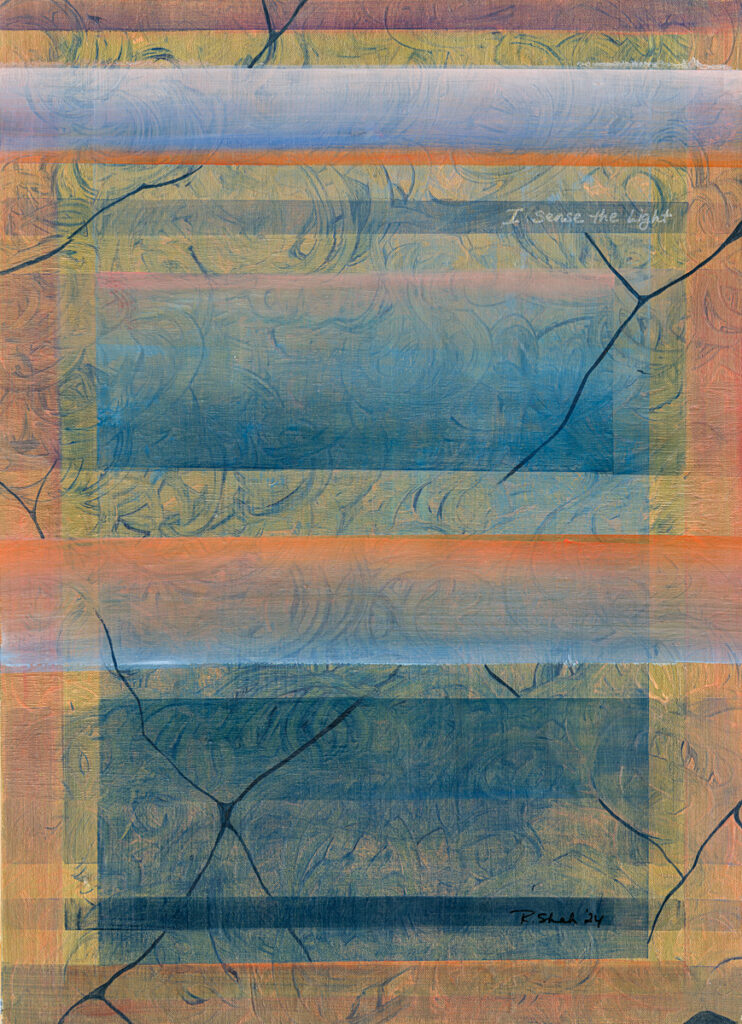
Art gives me a space where I can turn inward. Using my hands to paint the first few, if not all layers of my Art provides a soothing tactile experience.
Rajul Shah
5. Having trained extensively in Japan and now living in Singapore, how has your international experience shaped your artistic perspective?
I was born in India, raised in the US, lived in Japan for 8 years, and have been in Singapore for the past 5. Just as I am a product of all my living environments, so is what I create. I have always found myself gravitating towards Art and Design that offer feelings of harmony, zen, and spiritual comfort – this was further emphasized during my life in Japan. Most people living in India cohabitate peacefully across different religions, family customs, and subcultures. Visiting India can assault all of your senses: taste, smell, sight, touch, hearing… so you have to turn inward to your spirit to find peaceful moments in all the chaos. Singapore offers a diversity of South Asian and Chinese cultures – a microcosm of Malaysian, Indonesian, Chinese, and Indian perspectives layered with spiritual beliefs. Being exposed to different cultures, a myriad of talented artists and artistic styles feeds my desire to evolve my work constantly – I am always searching for the spiritual peace and zen in an artwork and/or design; and always strive to paint the “spiritual calm” among the chaos.
6. Your works have been displayed in galleries around the world. What has been one of the most meaningful reactions or experiences you’ve had from a viewer or collector?
A research professor at Duke bought two of my paintings that involved the heart chakra. She sent me a photo of how neurons fire in the brain. She said, “The lines painting the ‘breaks’ in my paintings look so much like the neurons we study in my lab.” It was interesting to see how the neurons resemble Kintsugi lines. It expanded my perspective, and I find it amazing—it’s almost like nature has given us an innate sense of how to hold ourselves together.
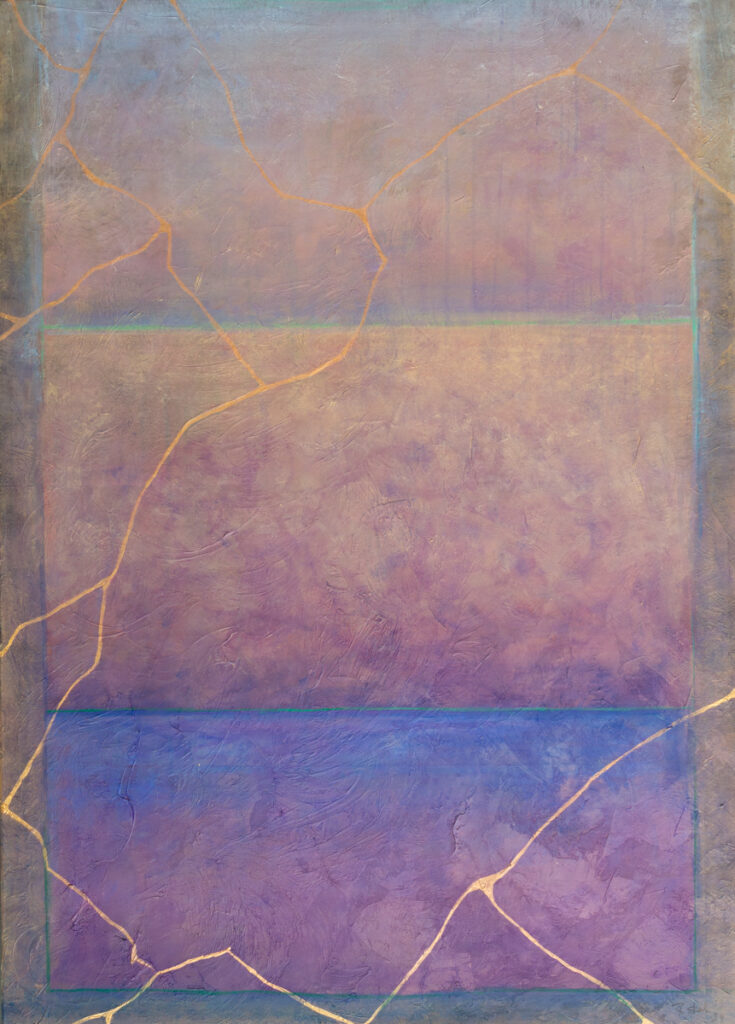
Rajul Shah’s art powerfully expresses resilience, healing, and spiritual growth. By merging the philosophy of Kintsugi with the chakra system, she creates visually stunning pieces that reflect the beauty in imperfection and the transformative power of self-acceptance. Rajul’s art reminds us that even in our brokenness, there is always the possibility for transformation and beauty. To learn more about Rajul, click the following links to visit her profile.
Arts to Hearts Project is a global media, publishing, and education company for
Artists & Creatives. where an international audience will see your work of art patrons, collectors, gallerists, and fellow artists. Access exclusive publishing opportunities and over 1,000 resources to grow your career and connect with like-minded creatives worldwide. Click here to learn about our open calls.









